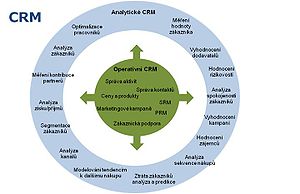Project Management for Small Business XV
The last topic to tackle in this project management series is assessing the success of a project. I introduced some previous topics by explaining that you probably think the task, such as issue management, is simple….but doing it well is not. I doubt that anyone would underestimate the challenge of being truly successful with a project.
Some newer project managers might believe that if you complete a project on time, the full scope has been delivered and the project is within, or better yet under, budget then the project is successful. I would say these are necessary conditions for project success but not necessarily sufficient. The majority of projects do not meet these three conditions. If you are able to meet them, you are doing pretty well.
Completing truly successful projects involves something more.
Earlier in this series, we discussed defining success criteria. These are more than scope items. Success criteria specify those conditions upon which the project will be deemed successful in your customer's eyes.
Let's consider an example: You are probably familiar with Salesforce.com. This is the most popular Customer Relationship Management (CRM) system today. Your project is to roll out Salesforce.com to your sales team. The project scope lists out specific requirements such as the ability to track leads, identify opportunities, work as a team on an account, and generate a monthly forecast. Is delivering this scope sufficient to being successful? Anyone that's tried to get a sales person to use a CRM system can affirm that this is not enough.
The reason is that many sales folks resist using a system regardless of how good it is. Many of them would rather work with prospects instead of entering data into a system. Furthermore, they don't want management to be looking over their shoulder, which is much easier to do if you have a sales tracking system. Therefore, you can deliver all of the features listed above and a lot more but you can only claim success on the project if your sales folks are actively using Salesforce.com.
I've seen plenty of project managers that would claim they have done their jobs by getting Salesforce.com turned up with customizations that fit their business. To be genuinely successful as a project manager, this is not enough. You have to take responsibility for meeting the success criteria of the project. Your success needs to be your customer's success. There is a very big difference between turning up a sales tracking system and getting the sales organization to use it. It's very hard to get people to adopt a new system.
As a project manager, don't be content with saying that you did your part and tried to carve out success narrowly enough where you can claim success. The change management aspect of projects are often more difficult than the technical work. It involves a different set of skills. Your customer may have to be the primary champion and change management agent to get your system integrated into the organization. You will make yourself a lot more valuable if you team with the custom
and only consider your project to be successful once it is being actively used and the success criteria are met.
Analytické CRM (Photo credit: Wikipedia)
How much more effort is involved in going beyond just delivering a system but getting it to be used?
A lot. It may take three months to get Salesforce.com ready to be used by your sales folks. It may then take at least a year, and often quite a bit longer, for it to be sufficiently adopted by your sales team.
Here are a few recommendations on techniques that you can use to go beyond just delivering the project scope and ensure that your hard work has the impact on the organization that it was intended to have:
- Make sure training is a priority and is done professionally. You may deliver a great product but your users will only get value from if they know how to use it.
- Be sure that you are prepared to support the project. Issues will come up. The faster and better that you are prepared to address them, the better the adoption. There may be no better way to achieve adoption of your project than to incorporate some suggestions from your users. The system will start to become theirs.
- Don't get defensive / don't point fingers. It may be true that your users don't like the system because your customer did not really think through the scope. If you are in a political, blame-oriented organization, you may need to ensure that management is clear on this. But, once the project is delivered, it is unproductive to spend energy on this. Instead, turn your attention to the challenges the user is having and how to get them addressed.
- Get formal feedback from your users. This might involve surveys, observing them using the system and focus groups. Do this often and try to respond to the feedback.
- Consider incentives. Sometimes no matter what you do, users will continue to resist. For sales folks, a common incentive is to only pay their commission for sales that were tracked through your system.
With that, we conclude our series. We hope you enjoyed reading this series and learned a tip or two that will help your future projects. If you have any suggestions for additional topics that you would like us to discuss – either project management related or other topics for small business owners – just let us know.
Thanks for reading and good luck with your projects!
Related articles
- Opportunities for Project Manager on CRM area ( Siebel or Salesforce.com ) (software4jobs.wordpress.com)









